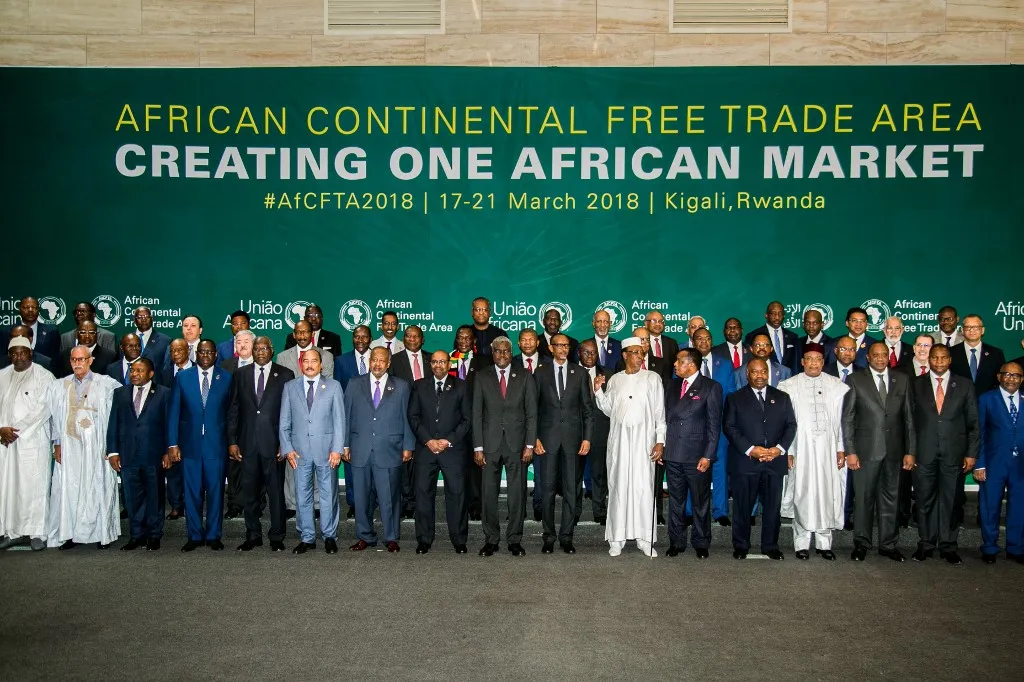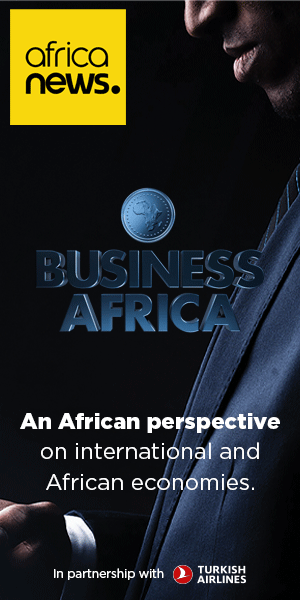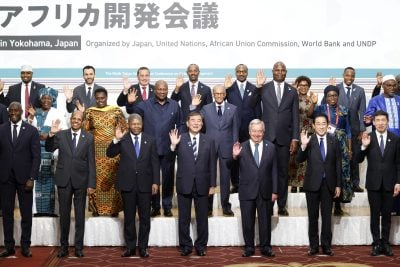Twelve months after the official start of trading under the African Continental Free Trade Area (AfCFTA) agreement, some commentators fear that the project is losing steam.
Despite the “fantastic surprise speed” of progress in 2020, “the AfCFTA seems to be losing the momentum it gained amongst African leaders at the very time its importance is recognised elsewhere,” says Carlos Lopes, professor in the Mandela School of Public Governance at the University of Cape Town.
“This apparent paradox has to be dissipated fast,” he warns.
Stumbling blocks
Lopes argues that while the Covid-19 pandemic is responsible for slower progress in getting the AfCFTA up and running, the real stumbling blocks lie in three elements that are eroding consensus:
- the never-ending discussion on the rules of origin, which is the intersection between trade and possible industrial policy;
- the interference of external partners pushing their agenda of divide and rule (with Kenya’s free trade deal with the US a case in point);
- a lack of capacity in the Secretariat to push the agenda, given its launch in the middle of the pandemic.
In this article we look at the background to the AFCFTA, catch up on progress towards its full implementation and consider whether it really is losing its way.
Current untapped export potential of intra-African trade is $21.9bn, says UNCTAD
“Comparing export potential to actual trade reveals that the total untapped export potential of intra-African trade is around $21.9 billion, equivalent to 43 per cent of intra-African exports (yearly average for 2015–2019),” according to the UN Conference on Trade and Development’s (UNCTAD) Economic Development in Africa Report 2021.
“More than one third of that export potential is explained by frictions, namely, static untapped export potential, which implies that $8.6 billion in trade could be realized by engaging actively in efforts to identify and address current market frictions in African trade today,” says the report.
What is the AfCFTA?
The AfCFTA is an ambitious trade pact to form the world’s largest free trade area by connecting almost 1.3bn people across 54 African countries.
The agreement aims to create a single market for goods and services in order to deepen the economic integration of Africa. The trade area could have a combined gross domestic product of around $3.4 trillion.
However, achieving the AFCFTA’s full potential depends on significant policy reforms and trade facilitation measures across African signatory nations.
The AfCFTA aims to reduce tariffs among members and covers policy areas such as trade facilitation and services, as well as regulatory measures such as sanitary standards and technical barriers to trade.
The agreement was brokered by the African Union (AU) in response to a growing realisation that trade integration across the African continent has long been limited by outdated border and transport infrastructure and a patchwork of differing regulations across dozens of markets.
The low level of intra-African trade in comparison with that between countries on other continents in particular reflects the continent’s position as an exporter of raw materials to the rest of the world. It is hoped that the AfCFTA will greatly boost Africa’s industry and agriculture.
Initial progress on developing the AFCFTA was relatively rapid and an agreement was signed by 44 of the AU’s 55 member states in Kigali, Rwanda on March 21, 2018. The only country still not to sign the agreement is Eritrea, which has a largely closed economy.

Many issues remain to be solved
Trading under the agreement commenced in a limited form on 1 January 2021, after a sixth month delay as a result of the impact of Covid-19.
Although trading has officially been launched, negotiations on many issues need to be resolved before the agreement can fully function. The negotiations have been divided into three phases:
- Phase 1 negotiations – trade in goods and services. Negotiations led to the ratification of legal instruments (the AfCFTA agreement itself and protocols on trade in service and goods and settlement of disputes) that came into force on 30 May 2019, permitting the launch of trading. However, negotiations continue on many details (see “Update on progress” below).
- Phase 2 negotiations – intellectual property rights, investment and competition policy. Some of these negotiations have already begun (see “Update on progress” below).
- Phase 3 negotiations – e-commerce. These negotiations are due to begin when phase 2 is complete.
Update on progress in negotiations
Talkmore Chidede, investment expert at the AfCFTA Secretariat, gave participants an update on progress in negotiations at a webinar organised to mark the launch of the PAFTRAC CEO Trade Survey Report: Assessing the impact of the AfCFTA on African Trade.
“Our main priority is to make sure that significant trade starts to happen across the continent under the AfCFTA regime,” explained Chidede.
“For trade to happen we have fundamental issues that we have to finalise. In terms of negotiations we have rules of origin, tariff schedules, trade in services commitments and non-tariff barriers.”
Rules of origin
The rules of origin are important because they determine the goods that are going to benefit from preferential treatment under the AfCFTA, explained Chidede.
According to the Secretariat website, they are “the criteria needed to determine the national source of a product. Their importance is derived from the fact that duties and restrictions in several cases depend upon the source of imports.”
Chidede said that the negotiations were 87.3% completed and that the Secretariat is engaging with stakeholders and member states to ensure they are finalised as soon as possible “because without the rules of origin we cannot trade under the AfCFTA”.
Tariff schedules
Negotiations are under way to eliminate tariffs on 90% of goods over a five-year period (10 years for least developed countries, or LDCs). An additional 7% of tariff lines are deemed “sensitive”. Tariffs on these goods will be eliminated over a 10-year period (13 years for LDCs). A remaining 3% of tariff lines can be excluded from liberalisation, but the value of these goods cannot exceed 10% of total intra-African imports.
This is a sensitive issue for many LDCs, whose governments rely heavily on import tariffs for their revenues.
“Countries are submitting their tariff offers,” said Chidede. “So far we have received 43 tariff offers from member states and they’re going through technical verification at the AfCFTA Secretariat, and of the 43, 29 comply with the modalities and principles of trading goods, which means that these 29 tariff offers are ready to commence trade.
“Member states are ready to commence trade as they comply with the threshold of trading under the AfCFTA.”
Trade in services
“We have the protocol on trade in services, but for trade in services to happen, member states or state parties have to make specific commitments, which we call service commitments. In service commitments we have received 44 initial offers. They go through the same processes as trade in goods. Malawi was the latest one to submit its initial offers.”
Non-tariff barriers
Non-tariff barriers (NTBs) restrict trade using forms other than tariffs, such as quotas, embargoes, sanctions and levies.
They are a greater hindrance to intra-African Trade than tariff barriers, says the Secretariat website. “One of the key objectives of the AfCFTA is to progressively eliminate existing NTBs and refrain from introducing new ones in order to enhance and facilitate intra Africa trade. The Continental tool will ensure NTBs are monitored with a view to ensuring they are eliminated.”
Chidede said that a mechanism for reporting non-tariff barriers was up and running.
“We’re trying to ensure that traders and businesses are able to report when they encounter non-tariff barriers when they encounter them through trading or when they are at the border. Then they get resolved through the mechanism.”
He added that the Secretariat was trying to ensure that businesses know how to use the system through sensitisation, with training sessions in collaboration with member states or other development partners to come next year.
Phase 2 issues
While the above issues relate to phase 1 of negotiations (which were originally supposed to be concluded by July 2021), Chidede said that progress was also being made on phase 2 issues including investment, intellectual property rights, competition policy, digital trade and women and youth and trade.
Member states have received documents on the investment and competition policies and are in the process of carrying out national consultations. Meetings are planned for early next year on digital trade, women and youth and trade and intellectual property rights.
Lack of information about AfCFTA is a major issue
One of the main findings of the PAFTRAC CEO Trade Survey Report was that a majority (62.3%) of respondents did not know where or how to find information about the AfCFTA.
Asked what information the Secretariat would be providing, Talkmore Chidede said that the Secretariat was working in collaboration with Afreximbank to make sure that information is available to the private sector.
When up and running, Afreximbank’s African Trade Gateway will provide digital assets to eliminate some of the challenges to intra-African trade.
“We are also developing a website for the AfCFTA Secretariat such that we have all the information and updates to whatever processes you are doing in relation to the AfCFTA negotiations, AfCFTA processes or any information that is very useful to the private sector.”
The Secretariat’s website currently contains information on a range of issues including rules of origin, the schedule of tariff concessions and non-tariff barriers, and provides access to the mechanism for reporting non-tariff barriers.
“We are also doing capacity-building workshops. We have some scheduled next year, to ensure that we do country workshops to sensitise the private sector and all the stakeholders about the AfCFTA and all the processes and give them an update on where we are with the negotiations, where we are in terms of implementation.”
He added that every country is supposed to have a trade portal housing information about the AfCFTA.
AfCFTA not dead in the water
While many traders may have seen the AfCFTA as “dead in the water”, other remain optimistic.
As South African journalist and Institute for Strategic Studies consultant Peter Fabricius points out, the limited progress in negotiations does not cast doubt on the viability of the AfCFTA. The full goal of removing tariffs from 97% of goods is not even supposed to be met until 2034.
“Complex trade negotiations no doubt take time. But by firing the starting gun almost a year ago when no runners were out of the starting blocks, African leaders have created confusion, especially among traders,” he writes.
This opinion is echoed in UNCTAD’sEconomic Development in Africa Report 2021, which found that the time needed to resolve issues has varied between 46 and 2,082 days in negotiations to set up the tripartite free trade area between the Common Market for Eastern and Southern Africa (COMESA), Southern African Development Community (SADC) and East African Community (EAC).
Issues related to rules of origin have taken on average 536 days to be resolved, with half of all issues related to rules of origin only being resolved in about one year, says the report.
The rules of origin were a sticking point for the AFCFTA from the beginning, said Omar Ben Yedder, group publisher and managing director of IC Publications (publishers of African Business), as he moderated the PAFTRAC webinar.
“Until that is resolved, nothing is resolved, so to speak. And it has to be sequential – you have to solve certain problems sequentially, before we can open the floodgates.”
Private sector must be part of the negotiations
“The private sector wants to be part and parcel of the negotiations,” said Amany Asfour, president of the Africa Business Council at the PAFTRAC webinar.
“Policymakers and negotiators within the government sector are not the ones who are going to implement the AfCFTA, but it is the private sector,” she said, underlining that the sector is overwhelmingly made up of SMEs, many run by women and young people.
“How will the AfCFTA impact the private sector?” she asked. “How does it create jobs? How does it make value addition? How does it transfer technology? How does it help industrialisation?”
AfCFTA secretary-general Wamkele Mene expresses optimism
According to the Africa Report, the AfCFTA Secretariat has received permission to recruit 350 more officers, including trade lawyers and economists, who should help to speed the implementation process, which will perhaps address the problem of the Secretariat’s weakness in pushing its agenda raised by Carlos Lopes.
In an interview with the Africa Report conducted in late November, the Secretariat’s secretary-general, Wamkele Mene, said this would allow the Secretariat to recruit the “brightest and best Africans” and build a “civil-servant sense of public service in the secretariat” that would serve the continent for decades.
He also expressed a faith in the commitment of Africa’s heads of state that contrasted with Lopes’s view that the project was losing momentum.
“I saw it from the beginning,” he said. “I have never seen this high level of commitment from our heads of state, who want to make sure our continent becomes industrialised. [That] we create jobs for young people. And that we place ourselves as a continent on a path to success and prosperity.”
But negotiators should still take heed of Lopes’ warning: “Without progress on the AfCFTA, Africa will be on the receiving end as usual. We need to accelerate the pace.”
Why we need a “Made-in-Africa” brand
At November’s Intra-Africa Trade Fair (IATF) in Durban, former Nigerian President Olusegun Obasanjo called for the creation of a Made-in-Africa brand that would promote intra-African trade and boost the international export of African products.
He told the audience that having such a brand would instil a sense of pride in each African country.

He said that the AfCFTA was working to remove the divisions that were brought about by colonialism, where Africa had been divided into regions based on the languages of the colonisers. The shared vision of IATF 2021 participants and traders was what would bring the AfCFTA to life, he declared.
Speaking at the PAFTRAC webinar, Amany Asfour, president of the Africa Business Council said:
“We are advocating to have at least 40% of all government procurement go to African private sector local products. If we give the big corporates all the government procurement then we are going nowhere.
“If we want AfCFTA to happen, we must have an African product that is strong, quality, competitive, standardised and value-added. We are not going to export again raw material… We need to have a standard product we call ‘Made in Africa’ we can trade among ourselves.”
Want to continue reading? Subscribe today.
You've read all your free articles for this month! Subscribe now to enjoy full access to our content.
Digital Monthly
£8.00 / month
Receive full unlimited access to our articles, opinions, podcasts and more.
Digital Yearly
£70.00 / year
Our best value offer - save £26 and gain access to all of our digital content for an entire year!
 Sign in with Google
Sign in with Google 




